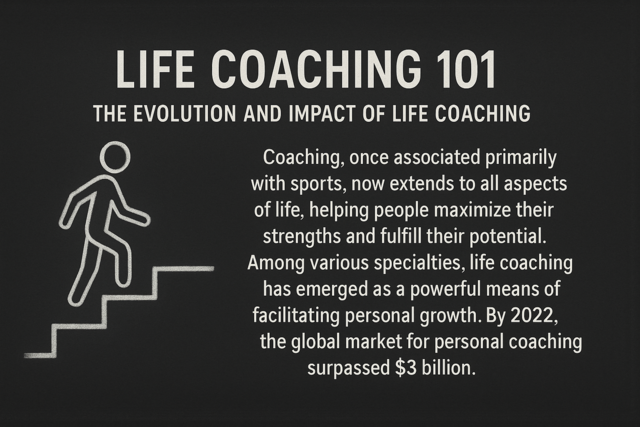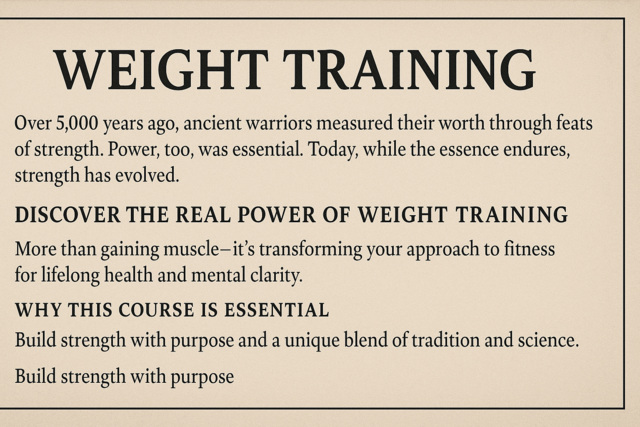Nutrition is probably the single most important factor in weight loss management and health maintenance. This article will provide a basic understanding of good nutrition, but is not intended to substitute for the advice of a physician or a registered dietitian.
Most of us love to eat, and in our convenience-filled world, we have no lack of choices.
Sometimes, when trying to think about healthy eating, it helps to think about the environment in which our bodies were originally intended to live: We were meant to exist on the verge of starvation, and we are extremely well-equipped to make good use of leaves, plants, berries, nuts, and the occasional bit of meat. Just in case our bodies weren't able to use the energy we take in each day through food, we came equipped with a wonderful energy storage system called fat. Some body fat is essential for keeping us healthy, so no one should be striving for 0 percent body fat, but most of us retain a few more layers than we need.
Most people living in industrialized nations no longer struggle with life-threatening hunger, but the daily cornucopia of choices combined with the industrialized lifestyle leads to other health problems. When we sit at a desk job for eight or more hours a day, work at a computer with a slumped posture, spend long hours commuting in a car each day, and watch a few hours of TV every night as our relaxation time, our bodies start to pay the toll. Then you add in other scheduling challenges like getting the kids to football practice, ballet lessons, and flute rehearsals, and you have the modern lifestyle, a continuous race with very little motion and a lack of time for the essentials of life: healthy food and exercise habits.
When we start to notice the results of these lifestyle habits, either because our clothes don't fit anymore, or because a doctor has warned us to lose a few pounds, we sometimes look for the easy solution. The "miracle diet shake" that "magically" revs up metabolism, allowing you to burn more calories while changing absolutely nothing else. Or we hear about the "body flush" diet--eating nothing and drinking massive amounts of fluids to help "cleanse" the system. There are no-carb diets, high-carb diets, even hot-dog diets. When you think about all the "miracle" solutions, it almost makes your head swim, and nutrition seems so incredibly complicated. But it's not. It's easy, it's common sense, and it involves basic concepts you already know--the kinds of things mothers used to tell their children at the dining room table.
The truth is, there is no miracle weight loss shake. All healthy weight loss comes from a calorie deficit, or burning more energy from food than you take in. It takes a deficit of 3500 calories to lose one pound. For most people, eating about 250 calories less per day and burning about 250 more creates a manageable calorie deficit of 500 calories per day, and over the course of a week, they can easily lose a pound. One pound may not sound like a lot, but it's important to keep this number in perspective. How long did it take you to gain the weight you are trying to lose? If you went on a cruise and gained five pounds in a week, it's reasonable to lose it in a month. If you had a baby and gained 30 pounds, it took you nine months to gain the weight, and it might take nearly that long to lose it. However, if you have lost focus on your health and weight for 20 years, and you suddenly realize you are 50 pounds or more above a healthy weight, then it is important to be patient and realize it will not come off all at once, but any kind of progress toward a healthy lifestyle is good progress. In nutrition, as with many parts of life, baby steps are easier to adjust to than enormous, large-scale life changes.
Beth Teas, of Fredericksburg, Virginia, is a registered dietitian who has worked with the patient population at Mary Washington Hospital for seven years. In the course of her job, she has consulted with patients who have generally been referred to her by a doctor or nurse because of nutrition-related problems like diabetes, cancer, heart disease, kidney problems. Mrs. Teas provided some expert advice on nutrition for this article.
Mrs. Teas said that food journals are wonderful tools, but only if you are willing to use them to make real changes. In order to do that, once you have tracked all the food you've eaten for a few days, take a serious look at your journal, and at the calorie and fat counts. Given the calorie cost of these foods, which ones could you give up pretty easily, without feeling too deprived? For most people, there's no reason to completely overhaul your diet from one day to the next. Start out looking for the simplest changes: Remember, if you eat 250 calories less and spend 250 calories more in the form of exercise, you will lose about a pound a week. After a few weeks, then you can find another high-calorie favorite that you can exchange painlessly for a healthier alternative.
Handling Hunger
One of the reasons a lot of people cringe at the word "diet" is the idea of feeling hungry and grumpy all the time. But according to Mrs. Teas, starving yourself is absolutely the wrong way to go. She emphasized the importance of not skipping meals. "Make sure you're eating at least three meals a day, if not more often."
Solving the diet puzzle
It seems like every week, there's a new diet fad. The tabloids report that Celebrity X lost 50 pounds in two weeks on the pomegranate plan, and the next thing you know, everyone in your office is on the pomegranate plan, and telling you that you should do it, too.
Mrs. Teas said she strongly cautions people when they are considering popular diets. "You may see some success with them, but that's usually for the short term. They unfortunately often leave out important nutrients by asking you to completely give up certain food groups or certain foods. Some can be dangerous if you do have certain medical conditions. For example, some of the fasting diets and liquid diets can be dangerous for people with diabetes or a blood sugar control issue."
If you like the idea of a more formalized diet plan, then look for one from a reputable health-related organization like the American Dietetic Association, the American Diabetes Association, American Heart Association, or an individual who has good credentials like a registered dietitian.
A High-Fiber Diet
When someone says "high-fiber diet," the first idea that comes to mind might be a bowl of bark-like bran cereal, or perhaps a fiber beverage mix that you stir into a glass of water, which tastes like sand. Although these items have their place in the world, for most people, increasing fiber in the diet is just a matter of eating a few more vegetables and fresh fruits each day.
According to Mrs. Teas, a high fiber diet not only helps with bowel regularity, which can help prevent diverticulitis and diverticulosis (painful intestinal disorders) but it also helps prevent colon cancer and heart disease because some fibers actually scrub down the walls of the intestines and others help bring cholesterol out of the body. The fibers also help you feel full and satisfied after a meal, and they take longer for the body to break down. That leaves you feeling full longer after you eat.
Your body can't break down and use the fiber itself, so it adds to your food volume without adding to your calorie intake. The best source of fiber for most people is in its natural form (fruits, greens, beans, and vegetables) because not only is it easier for the body to handle, but you also get the nutrients in the food.
Let's say your current diet focuses mainly on white breads, refined-flour pasta and meat. As you try to eat healthier, gently ease into a high fiber diet. (Don't go from no fiber to 3 cups of beans per day). Take it slow, and start with the foods you like, whether it be salad greens, whole-grain breads, black beans, fresh berries, or oranges. Make sure you drink more water, too. That will help your system handle all the fiber.
The Fluids
Nutrition doesn't just involve the food you eat in a day. It also has a lot to do with what you drink. The best fluid for your body is water. It is calorie-free and it is essential for all the functions of life. Other good fluids include some juices (but these can also be very calorie-rich; it's actually better to cut orange juice with water or sparkling water than to drink it straight), and even a modest amount of coffee or tea.
Not drinking enough liquid can, of course, cause dehydration, which can make you susceptible to all kinds of health problems, from constipation, to heat stroke. Sometimes the body tells the brain "I'm hungry" when it really means, "I'm thirsty." Staying well-hydrated will avoid that situation.
The more you exercise, the more water you will need to drink. Advanced athletes keep a very close eye on their fluids, but for most people, it is enough to be aware that it is critical to stay hydrated through the day, especially before and after a heavy workout.
Some fluids can sabotage your weight loss efforts, like full-sugar sodas, which offer no nutritional benefits and just bring you extra calories. Diet sodas, with artificial sweeteners, don't provide any extra calories, but many are caffeinated, which will actually remove water from your system.
Having a grocery list also helps save money at the store, because you are less likely to pick up impulse items. It also makes the whole shopping process faster and more efficient, getting you out of the store faster. Another tip is to do the majority of your shopping around the periphery of the store. That's where you're going to find the fresh items, and the most nutrient-rich foods, compared to the processed foods, which will be in the middle of the store.
What's wrong with processed foods? Generally, they're not always a good source of vitamins, minerals, and antioxidants. They generally are very high in sugar, high in sodium, or high in fat. Even when items are advertised as low in one undesirable item, like fat, they often up the other undesirables (like sugar and salt) to make up for it.
Processed foods can also be more expensive for what you're getting. At every processing step, someone has to make a profit, which adds to your price tag at the end of the line. Exchange the junk food for healthier items to help you save both calories and money. For example, instead of buying individual boxed drinks, pick up a case of water bottles. Instead ice cream, fresh fruit in season.
Also, be careful about portion sizes. If you have excellent willpower, you can make the decision to eat only half of your bowling-ball-sized pasta dish. However, if you feel you will eat whatever is in front of you, then just ask your server to portion the dish out and put half in a take-home box before it comes to the table. Or, you can ask for a lunch portion. If you are eating with someone who has similar tastes, you can share a meal.
Even options that look healthy at first blush, like salads, can be loaded with surprises like bacon, cheese, olives, hard-boiled eggs, sugar-crusted pecans, and myriad other things. Really look at the descriptions on the menu, and look for the healthier options.
Plan of Attack: Dinner at Home
The microwave is an under-utilized resource in most kitchens. You can use the zip-and-steam bags available in most grocery stores and simply slip in a fish fillet on top of a bed of spinach, seasoned with a low-sodium seasoning mix like Montreal Steak, then microwave for 2-3 minutes. Such a meal would allow you to go from fridge to table in less than 10 minutes. Or mix together a rinsed and drained can of black beans, a cup of frozen corn, and a cup of salsa and zap it for three minutes for a nearly-instant burrito filling to spoon into whole-wheat tortillas with some lettuce and low-fat cheese.
Crock pots are also a handy tool to have in the kitchen. They are extremely affordable, and they do the work while you're gone. You can put everything in the pot in the morning while waiting for the kids, turn it on, and it will be ready when you return home in the evening. Many of the foods that perform best in a crock pot also tend to be high fat, like a chuck roast or a Boston butt, but you can also use it for leaner meats like skinless chicken thighs or your own pasta sauce, chili and soup. Crock pots also give you the opportunity to add in a lot more vegetables than you would ever get in a store-bought item.
For singles, it can be hard to put this much effort into planning ahead for meals. Sometimes it's easier to think about caring for others than it is to care for ourselves. But even as a singleton, you can put together a tasty meal that will be ready and waiting for you when you get home at the end of the day. There are smaller-sized crock pots. You can also buy larger packages of chicken breasts and, on the weekends, take the time to portion them out into freezer bags filled with sliced veggies and a simple marinade like balsamic vinegar and basil. Vary the packets by using different veggies, marinades and meats, and then freeze the packets, marinade and all. Every morning of the week, you can move a different meal packet from the freezer to fridge. When you get home, just slide the defrosted meal on to the Foreman grill or into a pan and put it under the broiler. Having a healthy meal waiting for you can give you something to look forward to about going home, which can be difficult for people who live alone. If you are single, this is also a great opportunity to invite some friends over to your house to share some of your fabulous healthy meals, because chances are your single friends are looking for company too, and would appreciate your hospitality and a healthy homemade meal.
Eating healthy doesn't have to break the bank. Depending on your current eating habits, eating healthier can actually save some money and provide the double benefit of cost savings and calorie savings.
Eat in. If you eat out frequently, planning a few more meals a week at home will not only give you more control over what you eat, it is also a lot more budget friendly. Also, when you prepare a dinner at home, like a roast chicken, you can save sliced chicken to pack for lunch the next day. On days when you do eat out, save half your meal in a doggie bag to get two meals for the price of one.
|






























